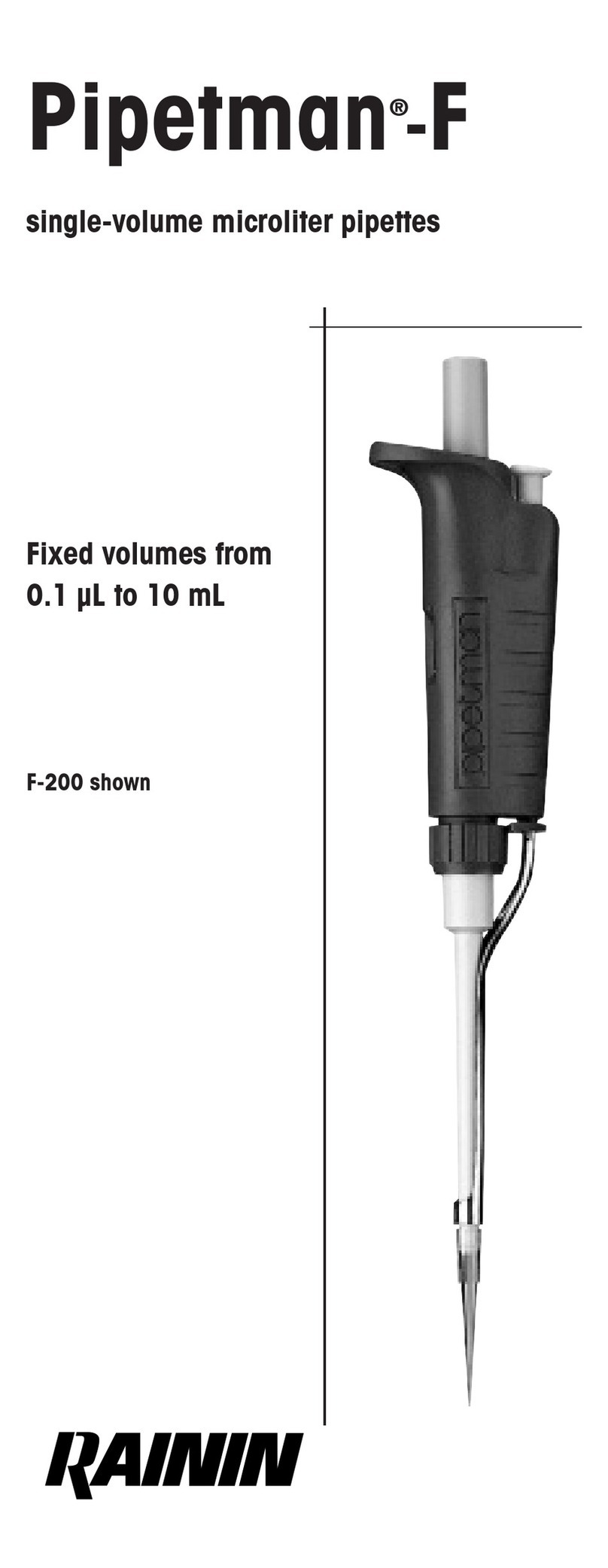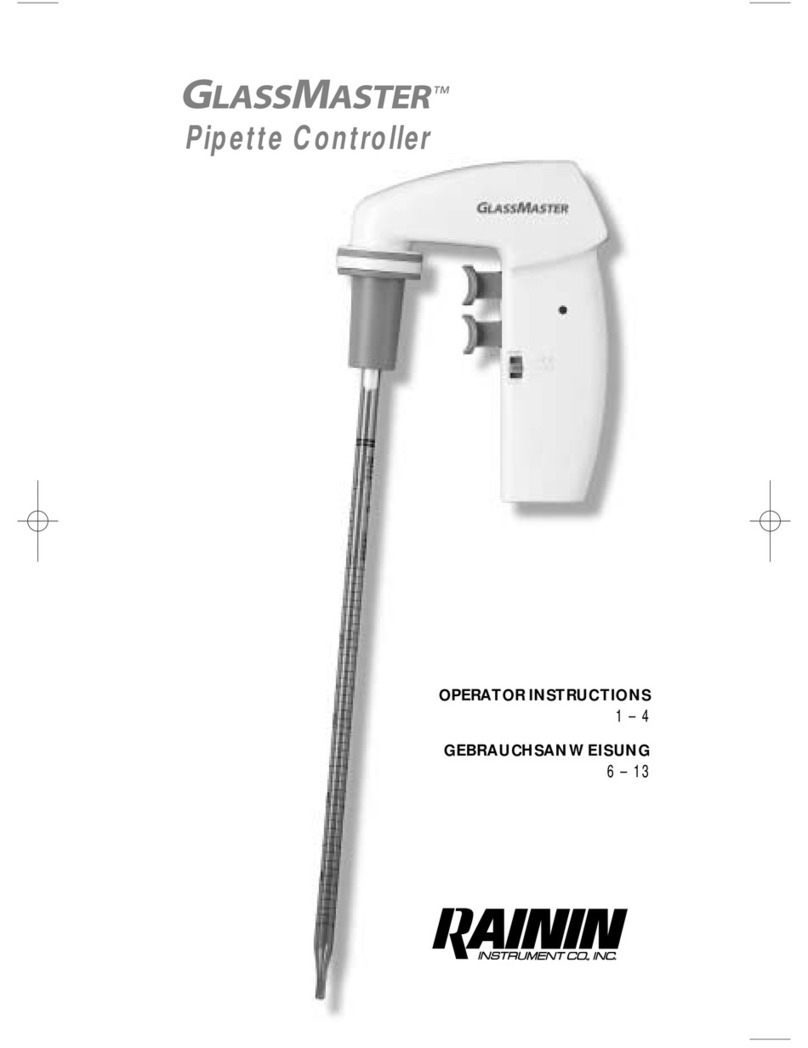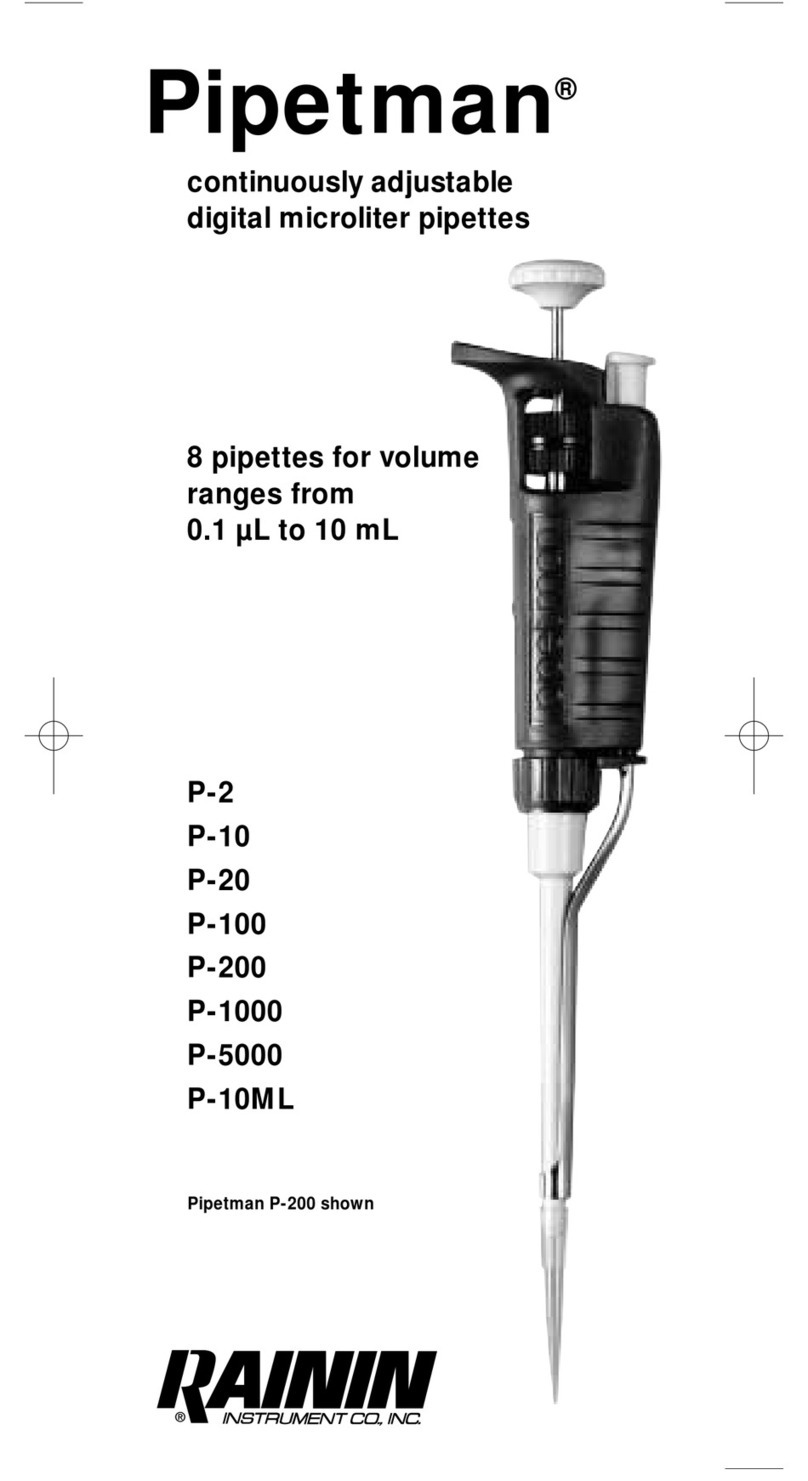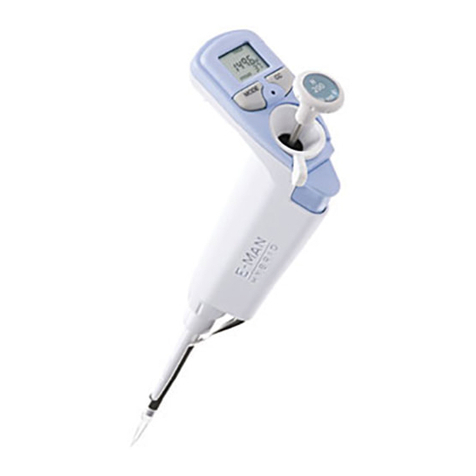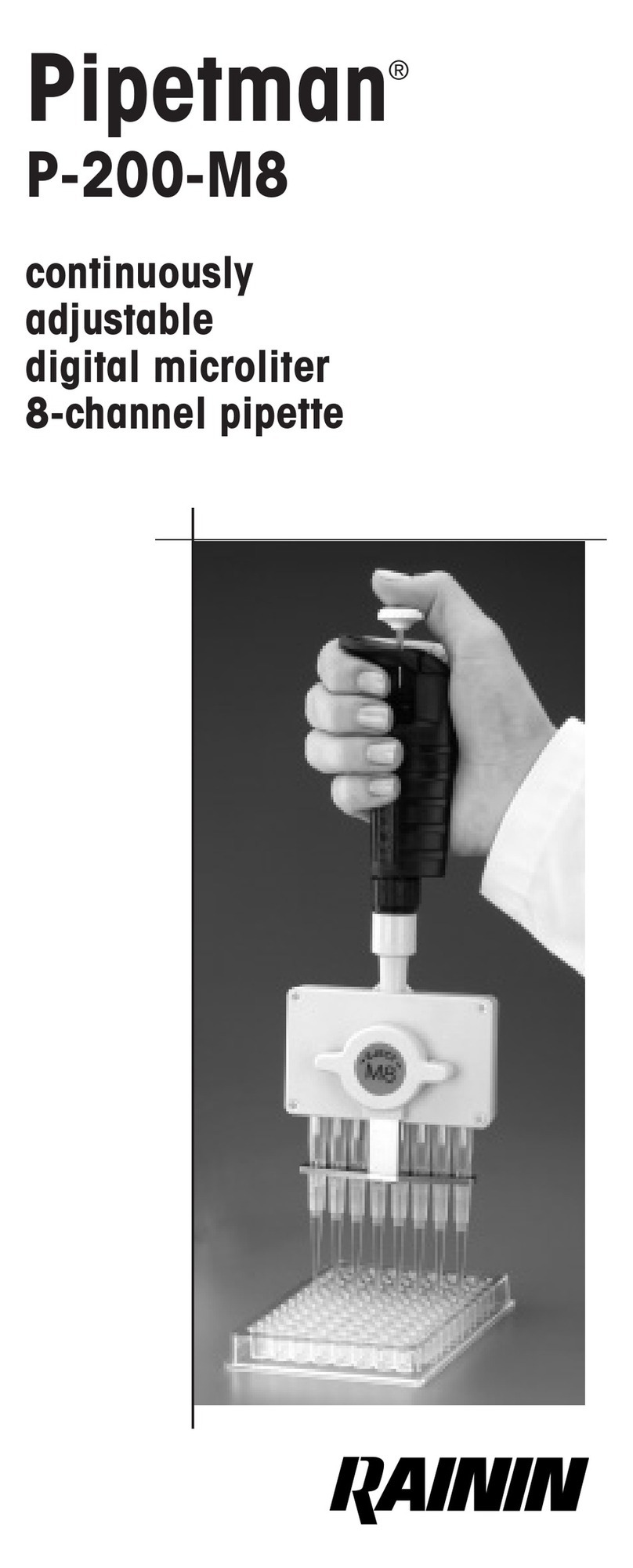Troubleshooting and Repairs
WARNING:
When removing the shaft from the pipette body,
make sure the spring, seal and o-ring do not fall off
the piston, especially on the smaller models.
Sample Splash (liquid inside the mechanism)
1. Remove the tip ejector arm. Also refer to the
appropriate drawing on page 12 or 13.
2. On pipettes up to 1000 µL, unscrew the shaft cou-
pling (B) and remove the shaft (C). For 2000 µL,
unscrew the shaft. For 5000 µL and 10 mL,
unscrew the lower part of the shaft. Note the way
the spring, seal and O-ring fit on the piston.
3. Inspect the seal assembly and piston for contam-
ination. The piston should be shiny and free of
corrosion. Clean with distilled water or isopropyl
alcohol. Dry with a lint-free tissue and reassemble
after inspecting the interior of the shaft for any
contamination. For the 5000 µL and 10 mL mod-
els, apply a small amount of grease to the seal.
4. If piston corrosion or staining is evident, do not
use the instrument. Call 800-662-7027 for Service.
Leaks, Inaccuracy, Abnormal Stroke
1. Loose shaft. Tighten coupling by hand.
2. Split or cracked shaft. Remove the tip ejector
and inspect the shaft. Replace the shaft if neces-
sary. If the shaft was dropped, remove it to see if
the piston is bent. If so, return the instrument for
service.
3. Worn seal and/or o-ring. All models incorporate
a polyethylene seal and o-ring. Examine the seal
and o-ring, replacing them as necessary. Pull off
the old seal and o-ring, position the new seal and
o-ring on the piston assembly as shown in the
drawings on pages 12-13, and reassemble the
pipette.
Note: It is NOT necessary to recalibrate Pipet-
Lite after changing seals.
4. Do not lubricate any components*. Pipet-Lite
uses a dry sealing system (*except for the 5000 µL
and 10 mL sizes. These pipettes require a small
amount of grease to be applied to the o-ring to
make the seal.)
8






